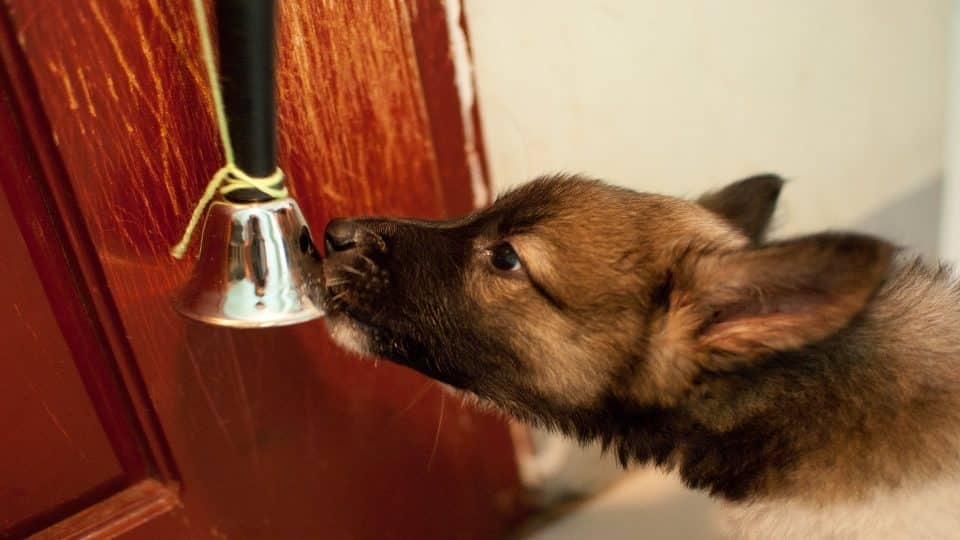
Unraveling the Paw-fect Pet Care Experience with Crate Escape Atlanta
Bell training for dogs has gained popularity as a method for teaching puppies to signal when they need to go outside. But does it work? In this comprehensive guide, we’ll explore the ins and outs of bell training, how to implement it with your puppy, and whether it’s an effective method for housebreaking your furry friend.
Bell Training A Puppy
What is Bell Training?
Bell training involves teaching your puppy to ring a bell when they need to go outside to relieve themselves. The concept is simple: by associating the ringing of the bell with going outside, you can provide your puppy with a clear and consistent signal to communicate their needs.
How Does Bell Training Work?
To bell train your puppy, you’ll need to first introduce them to the bell and associate it with going outside. This typically involves placing the bell near the door that leads to the outdoor potty area and encouraging your puppy to ring it before going outside. With consistent reinforcement and positive reinforcement, your puppy will learn to associate the bell with the act of going outside to potty.
How to Bell Train Your Puppy
Step-by-Step Guide to Bell Training
Introduce the Bell: Start by hanging a bell near the door that leads to your puppy’s potty area. Choose a bell that is easily accessible to your puppy and won’t be too loud or intimidating.
Associate the Bell with Going Outside: Every time you take your puppy outside to potty, encourage them to ring the bell with their nose or paw before opening the door. Use a consistent verbal cue, such as “outside” or “potty time,” to reinforce the association between the bell and going outside.
Reward and Reinforce: When your puppy successfully rings the bell and goes outside to potty, be sure to praise them and offer a treat as a reward. Consistent positive reinforcement will help reinforce the behavior and encourage your puppy to continue using the bell.
Practice and Patience: Bell training takes time and patience, so be prepared to practice consistently and remain patient with your puppy as they learn. With consistent practice and positive reinforcement, your puppy will eventually learn to use the bell reliably to signal when they need to go outside.
Bell training is effective for several reasons:
Clear Communication: Bell training provides a clear and consistent way for dogs to communicate their need to go outside. By associating the ringing of the bell with the act of going potty, dogs can effectively signal their needs to their owners.
Positive Reinforcement: Bell training relies on positive reinforcement to encourage desired behavior. When dogs ring the bell and are rewarded with praise and treats for going outside to potty, they learn to associate the bell with a positive outcome, reinforcing the behavior.
Establishing Routine: Bell training helps establish a routine for dogs, making it easier for them to understand when and where they are expected to go potty. By consistently ringing the bell before going outside, dogs learn to anticipate and prepare for the potty break, reducing accidents indoors.
Independence: Bell training empowers dogs to take control of their potty schedule and communicate their needs independently. Instead of relying on their owners to recognize signs of needing to go outside, dogs can proactively signal their need by ringing the bell.
Reducing Accidents: By providing dogs with a reliable way to signal their need to go outside, bell training helps reduce accidents indoors. Dogs learn to associate the bell with going outside to potty, minimizing the likelihood of accidents occurring inside the house.
Overall, bell training is effective because it offers a clear communication method, relies on positive reinforcement, establishes a routine, promotes independence, and reduces accidents indoors, ultimately leading to a happier and more harmonious relationship between dogs and their owners.
Your pets’ happiness and your peace of mind are our top priorities.
Frequently Asked Questions
The time it takes to bell train a puppy can vary depending on factors such as the puppy’s age, temperament, and previous potty training experience. Some puppies may learn to use the bell within a few days, while others may take several weeks to master the skill.
If your puppy rings the bell but doesn’t go potty outside, it’s important to remain patient and consistent with the training process. Take your puppy back inside and try again later, offering praise and rewards when they do eventually go potty outside.
Yes, bell training can be used for dogs of all ages, including older dogs. However, it may take longer for older dogs to learn the behavior compared to puppies, so patience and consistency are key.
If your puppy rings the bell excessively, it may be a sign that they are seeking attention rather than signaling a need to go outside. In this case, it’s important to ignore the behavior and only respond when your puppy genuinely needs to go potty.
While any type of bell can be used for bell training, it’s important to choose one that is easily accessible to your puppy and won’t be too loud or intimidating. Many pet stores carry bells specifically designed for bell training.
If your puppy is afraid of the bell, it’s important to introduce it gradually and associate it with positive experiences. Start by allowing your puppy to sniff and investigate the bell at their own pace, and gradually introduce it into the training process with plenty of praise and rewards.